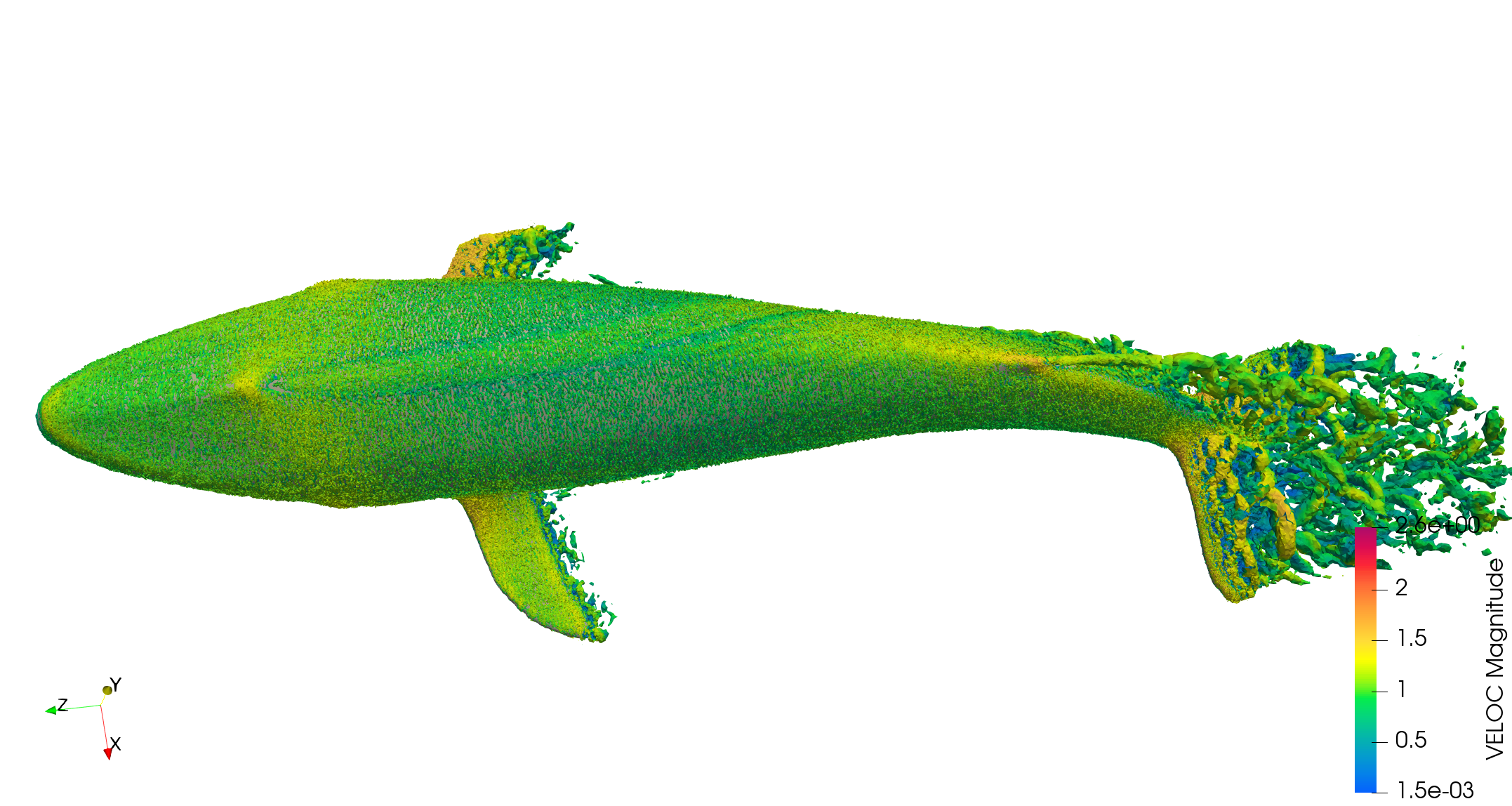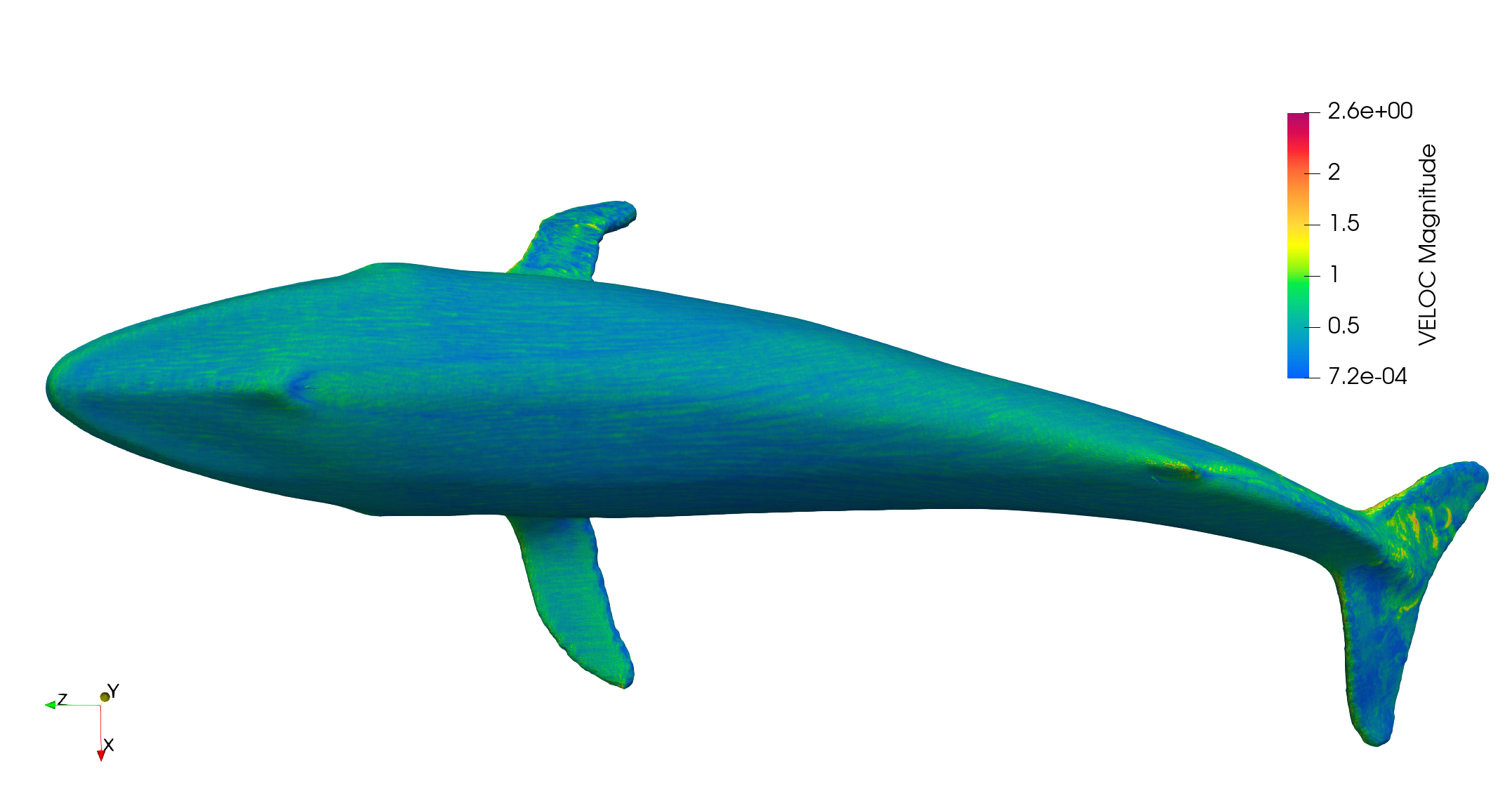CFD analysis to study the drag force of blue whale
Motivation:
Animal-borne video recordings from blue whales in the open ocean show that remoras preferentially adhere to specific regions on the surface of the whale. Using empirical and computational fluid dynamics analyses, we show that remora attachment was specific to regions of separating flow and wakes caused by surface features on the whale. Adhesion at these locations offers remoras drag reduction of up to 71–84% compared with the freestream. Remoras were observed to move freely along the surface of the whale using skimming and sliding behaviors. Skimming provided drag reduction as high as 50–72% at some locations for some remora sizes, but little to none was available in regions where few to no remoras were observed. Experimental work suggests that the Venturi effect may help remoras stay near the whale while skimming. Understanding the flow environment around a swimming blue whale will inform the placement of biosensor tags to increase attachment time for extended ecological monitoring.
Results:
 Fig.1 - Dorsal view of the blue whale where vorticity is colored by velocity magnitude at the outer edge of the boundary layer, revealing structure in the flow, including small-scale instabilities over much of the surface as in transitional flow, and large-scale vortical flows typical of wakes and separation zones.
Fig.1 - Dorsal view of the blue whale where vorticity is colored by velocity magnitude at the outer edge of the boundary layer, revealing structure in the flow, including small-scale instabilities over much of the surface as in transitional flow, and large-scale vortical flows typical of wakes and separation zones.
 Fig.2 - Velocity can be used in this figure as a first-order qualitative proxy for wall shear stress
Fig.2 - Velocity can be used in this figure as a first-order qualitative proxy for wall shear stress
For details, please see the paper published from the following link Remoras pick where they stick on blue whales
